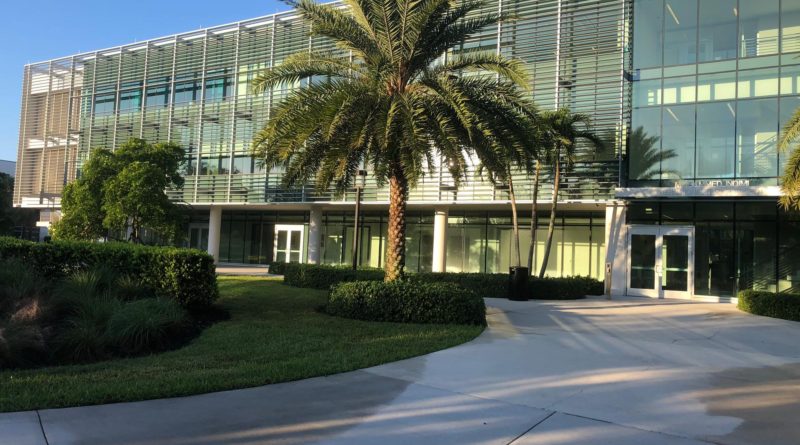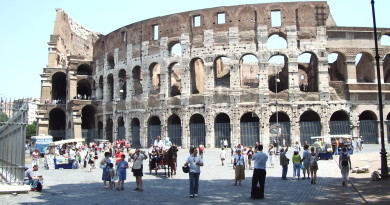LEED Certification is the Way to Go
Lynn Invests in Sustainable Buildings
Over the last few years, Lynn University has heavily invested in attaining popular green building certification, Leadership in Energy and Environmental Design, more commonly known as LEED certification, to stay true to their sustainability initiatives by constructing eco-friendly buildings.
According to the United States Green Building Council (USGBC), buildings impact the health and wellbeing of people and the planet in a substantial way. Buildings are costly to maintain and operate, use resources and generate waste. Green building is the design, construction and operation of buildings to boost the occupants’ health, the use of less resources, the reduction of waste and negative environmental impacts, as well as the decrease of life cycle costs.
Furthermore, the USGBC states that there are many different benefits to LEED certification such as: instant recognition for your building, faster lease up rates, higher resale value, healthier indoor space, lower use of energy, water and other resources, better for building occupants, the community and the environment and enhances your brand and establishes you as a leader in green building.
“LEED Certification is done using a score card. There are various milestones throughout each phase of a construction project (design, construction and finished product). A scorecard is used to track these milestones from beginning to end,” said Zach Minich, Assistant Project Manager for the department of Construction and Sustainability. “Some examples of the criteria being checked/tracked are what and how many methods of alternate transportation that can be used getting to & from a building (bicycle racks are an example of this), the open space & natural light allowed within the design, the efficiency of the landscape & building design/features to reduce water consumption, the buildings energy performance, how much waste generated from a construction project is recycled (usually 50-75% of all waste generated from the project must be recycled) and finally is the air quality in the building.”
Leed certification is the most widely used green building rating system in the world. The rating system is readily available for all buildings, communities as well as home project types. LEED is dedicated to providing a framework to create healthy, efficient and cost-effective green buildings that promote sustainability.
“While there are a few aspects about the LEED certification, meeting the different areas at different levels allows you to be rated at different levels,” said Dr. Wayne Law, assistant professor. “The rating levels are: Certified, Silver, Gold, and Platinum.”
Currently, there are three buildings on campus that have been LEED certified – the International Business Center (IBC), the Mary and Harold Perper Residence Hall and the University Center (UC). The IBC is platinum certified, the highest rating that can be received, the Perper Residence Hall has a silver rating and the UC’s rating is not yet available. The level of LEED certification that is achieved is based on how many points were earned at the end of the project with 40-49 points earning bronze, 50-59 warranting silver, 60-79 earning gold & 80-110 leading to a platinum recognition.
“There are many different aspects of a building’s design that can qualify it for LEED certification. However, all LEED buildings have in common that they not only have a smaller negative impact on the environment than similar-sized buildings, but that they also are aesthetically pleasing, or nice to look at,” said Dr. Alanna Lecher, assistant professor of natural and applied sciences. “For example, the stairway from the first to the second floor in the University Center is very prominent, to encourage everyone to take the stairs instead of the elevator, reducing electricity usage. LEED buildings also typically have large windows to let in natural light and reduce the need for artificial light.”
Lynn began their LEED certification path after the completion of the IBC in 2015 and have committed to be environmentally sustainable ever since, with numerous projects being conducted all over campus.
“LEED Certified Buildings are extremely important for our current environmental crisis. These criteria allow companies to be motivated to become LEED Certified Buildings which in other words, just means to become more sustainable,” said Shasmy Daly, president of the student sustainability committee. “Buildings are a huge contributor to environmental contamination and knowing that companies are incentivized to become more environmentally aware gives me peace of mind. Slowly but surely, we will be able to reverse the damage we’ve done and reduce future damages.”
Apart from the reduced impact on the environment, LEED certified buildings tend to be more economical than standard buildings because they are more energy and water efficient, resulting in significant savings. For example, the IBC is extremely cost-effective because it utilizes recycled water to flush toilets instead of tap water, a much cheaper and environmentally friendly alternative.
“LEED certified buildings have immense benefits starting from the time we break ground. As mentioned, the LEED process is one that tracks progress throughout the lifecycle of a project. We are able to be more eco-friendly throughout the entire construction process,” said Minich. “From recycling the waste generated from the project to providing higher quality air for those that work in and use the building, LEED buildings are beneficial to us as people. They also benefit the environment by using resources more efficiently and cutting down on harmful emissions.”




